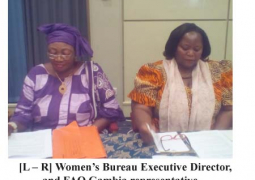
The
African Development Bank (AfDB) remains focused on delivering its plans to
transform Africa and work towards building a continent with seamless borders.
“We
have reasons to be optimistic,” writes AfDB’s Moono Mupotola, “with the strong
signal sent by Heads of State” who showed their commitment to Africa’s regional
integration at the 27th African Union Summit in Kigali, Rwanda, in July with
their proposal to implement a single passport for Africa and ensure free
movement of people as part of the African Union’s 2063 Agenda.
Single
African Passport - A Turning Point for an Integrated and Prosperous Africa
To
all those who are convinced that regional integration requires strong political
will and committed leadership, African Heads of State showed just that when
they were presented with a single African passport at the 27th African Union
Summit in Kigali, Rwanda.
The
proposal to implement a single passport for Africa and ensure free movement of
people is part of the African Union’s 2063 Agenda.
While
skeptics may continue to doubt, the African Development Bank shall remain
focused on delivering on our plan to transform Africa and work towards building
a continent with seamless borders. We have reasons to be optimistic with the
strong signal sent by Heads of State in Kigali.
Indeed,
we are optimistic because, even if we are still at the very early stages of a
complex process, holding a single African passport will mean that our leaders’
aspirations to see their citizens travel throughout the continent without being
confronted by the usual administrative constraints are attainable.
Meeting
these aspirations is critical if we want to achieve our vision for an
integrated economic space where opportunities are shared among the people of
Africa. Labour mobility is highly beneficial, and can help fill Africa’s labour
needs in the education, health and industrial sectors. Rwanda has seen a 22%
increase in African tourism and business travellers since 2013 when it allowed
Africans to obtain visas on arrival. The East African region has made great progress
in overcoming the challenges associated with free movement of labour by
encouraging mutual recognition of professional and academic qualifications,
starting with engineers, architects, and accountants.
The
African Development Bank’s Human Capital Strategy indicates that Africa needs
about four million more teachers and one to two million more health workers.
These shortages can partly be addressed by improving workers’ mobility and
opening borders to allow health personnel, including nurses, midwives and
biomedical engineers to practice elsewhere on the continent.
The
education sector can also profit from a borderless continent. In July 2013, the
AfDB announced the creation of a US $154.2-million Pan African University of
science, innovation and technology within the next five years. This initiative,
coupled with a number of inter-university associations such as the francophone
Conseil Africain et Malgache pour l’Enseignement Superieur (CAMES);
Inter-University Council of East Africa (IUCEA); Southern African Regional
Universities Association (SARUA); and inter-university cooperation under the
Arab Maghreb Union (AMU), should be strengthened and encouraged to facilitate
cross-border inter-university mobility for students and lecturers. Ultimately,
this should also address the technical skills deficit that is prevalent on the
continent.
Just
recently, on July 14, 2016, the Bank’s Board approved an Industrialisation
Strategy, whose key objective is to encourage development of regional value
chains and high value-added activities and products for Africa’s commodities
and exports. The diamond industry is an example, as the Southern African
Development Region (SADC) produces an estimated 60% of the world’s rough gem
diamond. But to date, of the estimated 800,000 jobs in the cutting and
polishing industry worldwide, only 8,000 are in the SADC region, representing
less than 1% of the global workforce. This indeed is a lost opportunity for the
200 million youths in Africa, comprising over 20 percent of the continent’s
population, and who make up about 60 percent of total unemployment in Africa.
The question we should ask ourselves is what skills, labour policies and
training facilities are needed at regional level to enable SADC to bring the
estimated 800,000 diamond cutters jobs back to the region?
The
efforts that the AfDB has made on the infrastructure front are commendable,
with US $3.4 billion having been approved for Multinational Operations in 2015
alone. While we all agree and understand that regional economic integration
goes beyond building “hard” infrastructure, it is also fundamental that we work
on the “software” which includes easing the movement of skills to make our
continent a destination of choice for investors.
The
Bank is supporting a number of key initiatives that seek to harmonise
regulations and policies with a view to facilitating labour mobility, an
important enabler for regional integration and economic development on the
continent. One such initiative is the drafting of a new migration policy for
the Economic Community of West African States (ECOWAS), which is expected to
enhance talent mobility in the region.
In
view of all of these, I am hopeful that together, united in our diversity, we
Africans can paint a picture of what we desire for ourselves and for future
generations. The single African passport is yet another milestone, and we
should not shy away from a little celebration. As Nelson Mandela once said,
“Remember to celebrate milestones as you prepare for the road ahead.”
Moono
Mupotola is the Director of the NEPAD, Regional Integration and Trade
Department at the African Development Bank.



